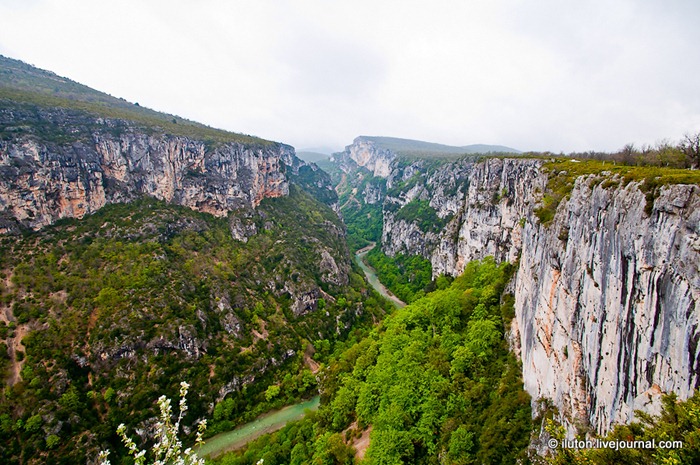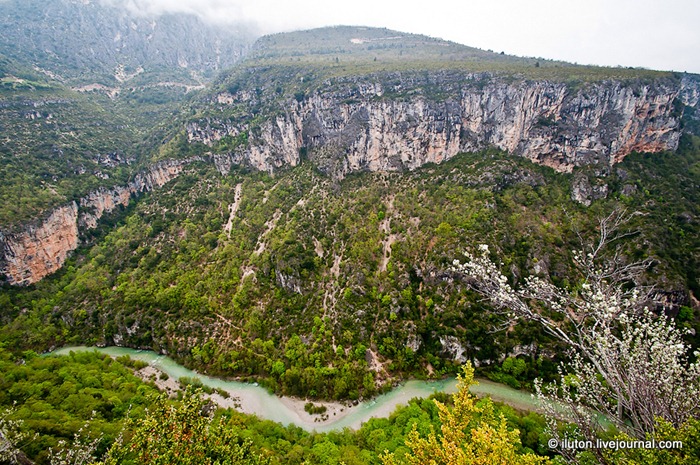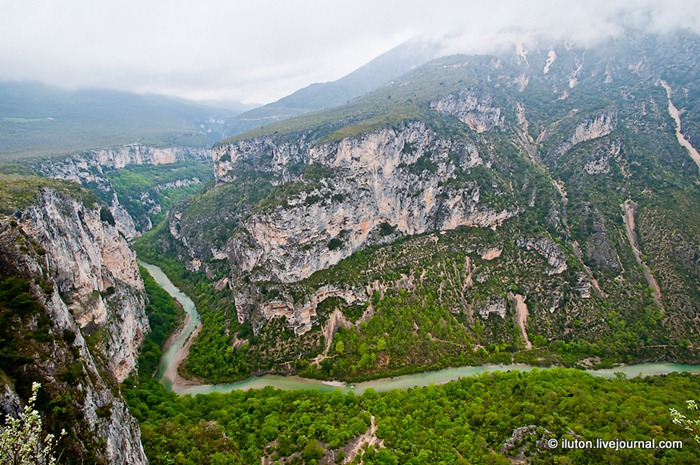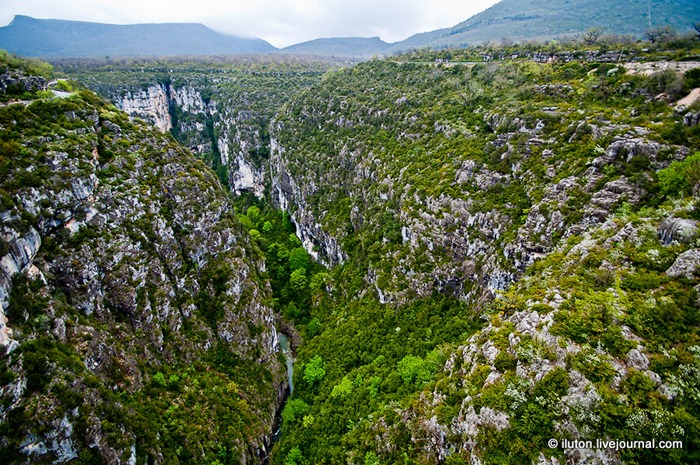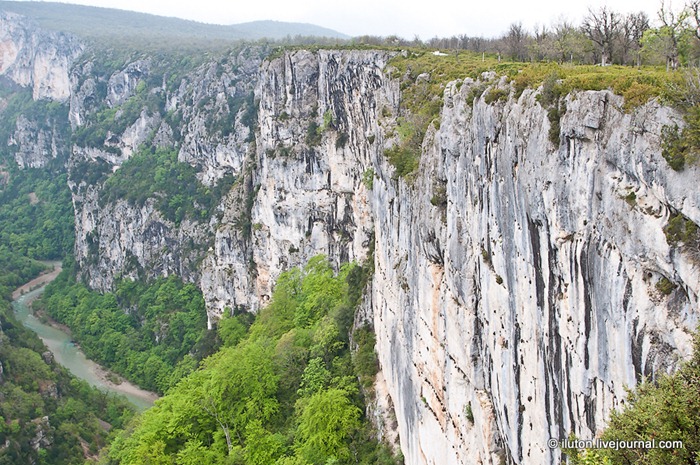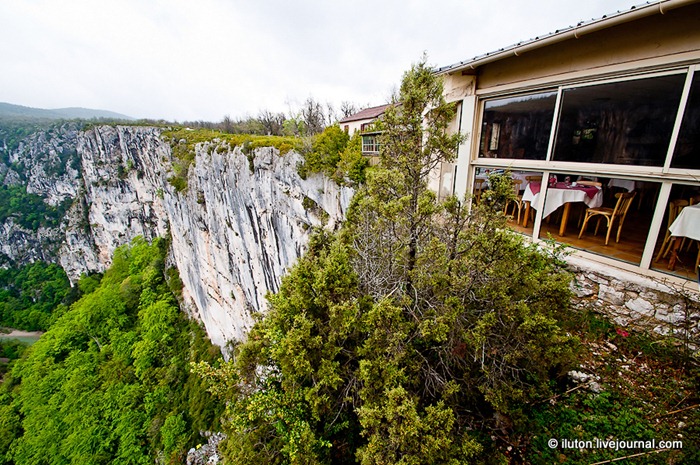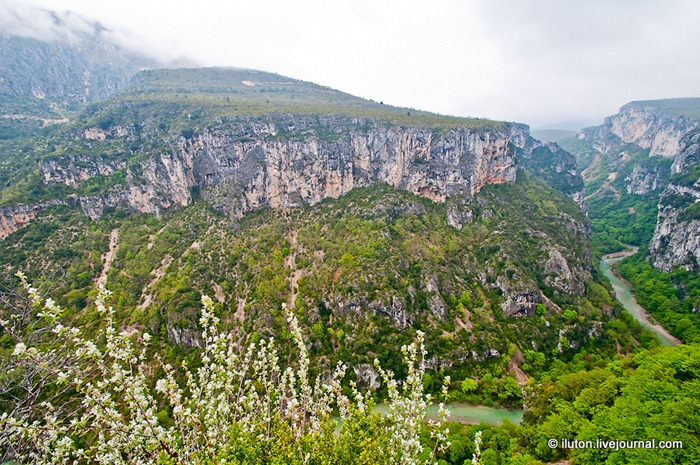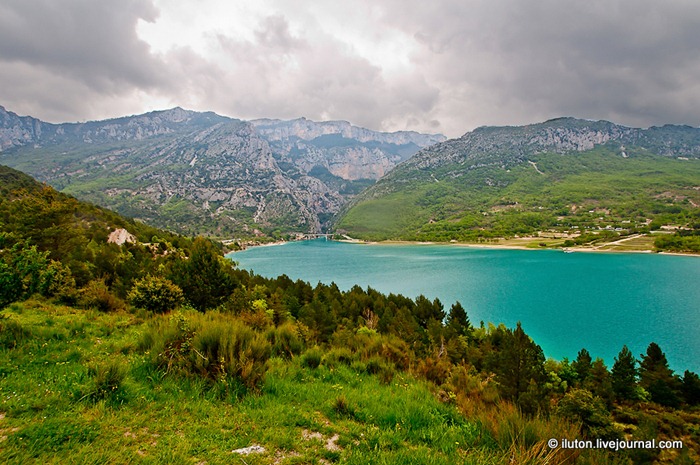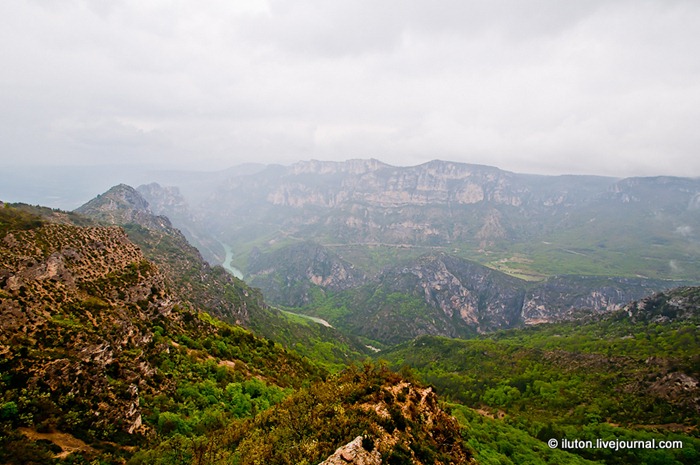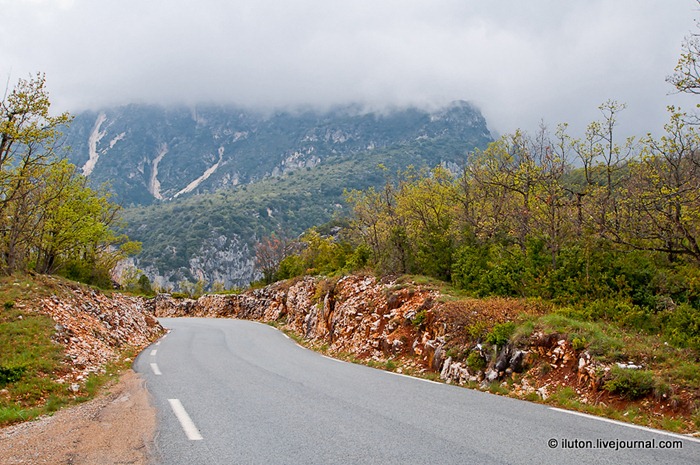We all know that weather can get pretty wild sometimes and that it is not always in accordance with our wishes. Global warming, pollution, and and similar effects caused by human could increase chance for some extreme weather conditions.
Could you imagine how it would be to live a single minute on a 57,8°C (136 °F) temperature? Could you imagine that there was hailstorm with hailstones as big as 17,8 cm (7.0 in) diameter and 47.6 cm (18.75 in) circumference? Extreme weather can happen almost anywhere and we hope none of us will be there when it happens.
1. Highest Air Temperature Ever Recorded:

It would have been a bad time to be in Al ‘Aziziyah, Libya on September 13, 1922. The temperature high of the day was recorded at 57.8 °C (136 °F), making it the highest air temperature ever recorded. Al ‘Aziziyah is located near the Sahara desert which is one reason it was so hot. Despite this record, there have been claims of higher temperatures in other places during a phenomenon known as a “heat burst” where winds rapidly increase the temperature and lower the moisture in the air. The most extreme of these is the supposed 87 °C (188 °F) during a heat burst in Abadan, Iran during June of 1967. The event has not been confirmed and therefore is not accepted as the world record. As of now Death Valley, California is a close second for hottest recorded temperature with a high of 56.7 °C (134 °F) on July 10, 1913.
2. Fastest Temperature Rise:

At 7:30 a.m. on January 22, 1943, in Spearfish, South Dakota, the temperature was -20°C (-4°F) when a chinook (wind that goes downhill) began to blow very quickly. Within two minutes the temperature had risen to +7°C (+45°F). This 27°C (49°F) rise in temperature is the fastest temperature rise ever recorded. The strange weather patterns continued and an hour and a half later the wind stopped and the temperature dropped from 12°C (54°F) to -20°C (-4°F), a total drop of 32°C (58°F) in only 27 minutes. Sources: Spearfish and RMC.
3. Coldest Temperature on Earth:

The Vostok Station is a Russian research facility located on the southern “pole of cold” in Antarctica. The poles of cold are the points on the earth with the lowest recorded air temperatures, and although there are multiple locations that are considered “poles of cold” in the northern hemisphere, Vostok is undeniably the coldest part of Antarctica. To give you some perspective, the average winter climate is −65 °C (−85 °F) and about −30 °C (−25 °F) in the summer. On July 21, 1983, the temperature at the Vostok Station dropped to −89.2 °C (−128.6 °F), and this is the coldest temperature ever recorded on earth. In addition to the cold, the climate in the area is incredibly unfit for humans for many reasons. There is essentially no moisture in the air, the average wind speed is 11 mph (Up to 60 mph), there is a lack of oxygen and carbon dioxide in the air, and the area has a polar night that lasts three months. The facility is used for research such as ice core drilling and the study of magnetic fields.
4. Fastest Temperature Drop:

South Dakota has some strange weather due to the Chinooks, and Rapid City (about 45 min from Spearfish) holds the record for the fastest temperature drop ever recorded. On January 22, 1943, the same day as the strange weather in Spearfish above, the temperature plummeted 27°C (47°F) in 5 minutes from 16°C (60°F) to -11°C (13°F), and this set the record for fastest drop in temperature ever recorded.
5. Largest Snowflake:

On January 28, 1887, a rancher at Fort Keogh, Montana discovered a snowflake that was 38 centimeters (15 in) in diameter, but unfortunately because of the time period there is no picture of the actual flake. Although the circumstances seem fishy, he had witnesses and the flake is recognized by the Guinness Book of World Records as the largest snowflake ever recorded.
6. Most Rain in 24 Hours:

Between 15 and 16 March 1952, Cilaos at the center of the Island Réunion received 1,869.9 mm (73.6 in) of rainfall, and this is the greatest 24-hour precipitation total ever recorded on earth. The island also holds the record for most rainfall in 72 hours, 3,929 mm (154.7 in) at Commerson’s Crater in March, 2007.
7. Highest Snowfall in North America:
Between July 1, 1998 and June 30, 1999, 29.0 meters, (1140 in) of snow fell on Mount Baker which is located in Washington State, United States. When the Mt. Baker Ski Area reported the figure it was investigated by the National Climate Extremes Committee and they voted unanimously to accept the number. The previous record was 1,122 inches on Mt. Rainer (150 miles south of Mt. Baker) in 1971. The Pacific Northwest has large quantities of snowfall in the mountains and that is for a few reasons. Seattle has a well-earned reputation for raining often, and when all of the moisture-filled clouds from the Pacific hit the mountains they begin to dump their precipitation on the slopes. Seattle is at a low elevation so it is frequently too warm for snow, but it is often below freezing at elevations higher than 4,000 feet which leads to the high snowfall in the mountains.
8. Largest Hailstone:

On June 22, 2003 a large thunderstorm moved across south-central Nebraska, and after a hailstorm local residents in Aurora found an extremely large hailstone and quickly put it in a freezer to keep it from melting. It was examined by the National Climate Extremes Committee who measured it as being 17.8 cm (7.0 in) diameter and 47.6 cm (18.75 in) circumference. The previous record was found in Coffeyville, Kansas, on September 3, 1970, and had a diameter of 5.7 (14.5 centimeters) inches as well as a circumference of 17.5 inches (44.5 centimeters). It is not officially the heaviest hailstone ever recorded, but it may have been before it hit a gutter and had time to melt before between the time it fell and was frozen. The National Oceanic and Atmospheric Administration’s (NOAA) reports that hail can fall as fast as 100 miles (160 kilometers) per hour, and more destructive hailstorms cause one billion dollars in damage to property and crops annually. At this time the record-holding hailstone is stored at the National Center for Atmospheric Research in Boulder, Colorado.
9. Fastest Wind:

On May 3, 1999, tornadoes formed in Oklahoma and began destroying homes across the state. At about 7:00 Pm a DOW (Doppler On Wheels as pictured above) recorded a three second gust of wind that was traveling at 512 km/h (318 mph), and the speed far surpassed the previous record of 460 km/h (286 mph) in a tornado by Red Rock, Oklahoma, on April 26, 1991. In 1971 Ted Fujita of the University of Chicago introduced a method of categorizing tornadoes called the Fujita Scale. In the rating system he set out parameters to classify tornadoes F0 through F5, but in his notes he also described a theoretical F6 tornado which would have a higher wind-speed than a F5 tornado and he was almost certain could not exist. The highest windspeed for a F5 is 318 mph, so if the winds had been 1 mph faster it would have been the first tornado ever to be classified as an F6.
10. Largest and Most Severe Tornado Outbreak:

From April 3 to April 4, 1974, in a period of 18 hours, 148 tornadoes occurred across the 13 central US states and Ontario, Canada. The event came to be known as the “Super Outbreak” and it had devastating effects. 24 of the tornadoes were classified on the Fujita Scale as F4’s, and six were F5’s, more F5’s than have been reported in any other year. There were also more significant tornadoes during that 24 hours than any other entire week on record. It extensively damaged approximately 900 square miles (1,440 square kilometers) along a total combined path length of 2,600 miles (4,160 km). The outbreak of tornadoes was caused by an extreme low-pressure system that moved across the US, and it created $3.5 billion in damages. More than three hundred people were killed during the 18 hours, and 5,484 people were injured
Source
READ MORE»
Could you imagine how it would be to live a single minute on a 57,8°C (136 °F) temperature? Could you imagine that there was hailstorm with hailstones as big as 17,8 cm (7.0 in) diameter and 47.6 cm (18.75 in) circumference? Extreme weather can happen almost anywhere and we hope none of us will be there when it happens.
1. Highest Air Temperature Ever Recorded:

It would have been a bad time to be in Al ‘Aziziyah, Libya on September 13, 1922. The temperature high of the day was recorded at 57.8 °C (136 °F), making it the highest air temperature ever recorded. Al ‘Aziziyah is located near the Sahara desert which is one reason it was so hot. Despite this record, there have been claims of higher temperatures in other places during a phenomenon known as a “heat burst” where winds rapidly increase the temperature and lower the moisture in the air. The most extreme of these is the supposed 87 °C (188 °F) during a heat burst in Abadan, Iran during June of 1967. The event has not been confirmed and therefore is not accepted as the world record. As of now Death Valley, California is a close second for hottest recorded temperature with a high of 56.7 °C (134 °F) on July 10, 1913.
2. Fastest Temperature Rise:
At 7:30 a.m. on January 22, 1943, in Spearfish, South Dakota, the temperature was -20°C (-4°F) when a chinook (wind that goes downhill) began to blow very quickly. Within two minutes the temperature had risen to +7°C (+45°F). This 27°C (49°F) rise in temperature is the fastest temperature rise ever recorded. The strange weather patterns continued and an hour and a half later the wind stopped and the temperature dropped from 12°C (54°F) to -20°C (-4°F), a total drop of 32°C (58°F) in only 27 minutes. Sources: Spearfish and RMC.
3. Coldest Temperature on Earth:

The Vostok Station is a Russian research facility located on the southern “pole of cold” in Antarctica. The poles of cold are the points on the earth with the lowest recorded air temperatures, and although there are multiple locations that are considered “poles of cold” in the northern hemisphere, Vostok is undeniably the coldest part of Antarctica. To give you some perspective, the average winter climate is −65 °C (−85 °F) and about −30 °C (−25 °F) in the summer. On July 21, 1983, the temperature at the Vostok Station dropped to −89.2 °C (−128.6 °F), and this is the coldest temperature ever recorded on earth. In addition to the cold, the climate in the area is incredibly unfit for humans for many reasons. There is essentially no moisture in the air, the average wind speed is 11 mph (Up to 60 mph), there is a lack of oxygen and carbon dioxide in the air, and the area has a polar night that lasts three months. The facility is used for research such as ice core drilling and the study of magnetic fields.
4. Fastest Temperature Drop:

South Dakota has some strange weather due to the Chinooks, and Rapid City (about 45 min from Spearfish) holds the record for the fastest temperature drop ever recorded. On January 22, 1943, the same day as the strange weather in Spearfish above, the temperature plummeted 27°C (47°F) in 5 minutes from 16°C (60°F) to -11°C (13°F), and this set the record for fastest drop in temperature ever recorded.
5. Largest Snowflake:

On January 28, 1887, a rancher at Fort Keogh, Montana discovered a snowflake that was 38 centimeters (15 in) in diameter, but unfortunately because of the time period there is no picture of the actual flake. Although the circumstances seem fishy, he had witnesses and the flake is recognized by the Guinness Book of World Records as the largest snowflake ever recorded.
6. Most Rain in 24 Hours:

Between 15 and 16 March 1952, Cilaos at the center of the Island Réunion received 1,869.9 mm (73.6 in) of rainfall, and this is the greatest 24-hour precipitation total ever recorded on earth. The island also holds the record for most rainfall in 72 hours, 3,929 mm (154.7 in) at Commerson’s Crater in March, 2007.
7. Highest Snowfall in North America:

Between July 1, 1998 and June 30, 1999, 29.0 meters, (1140 in) of snow fell on Mount Baker which is located in Washington State, United States. When the Mt. Baker Ski Area reported the figure it was investigated by the National Climate Extremes Committee and they voted unanimously to accept the number. The previous record was 1,122 inches on Mt. Rainer (150 miles south of Mt. Baker) in 1971. The Pacific Northwest has large quantities of snowfall in the mountains and that is for a few reasons. Seattle has a well-earned reputation for raining often, and when all of the moisture-filled clouds from the Pacific hit the mountains they begin to dump their precipitation on the slopes. Seattle is at a low elevation so it is frequently too warm for snow, but it is often below freezing at elevations higher than 4,000 feet which leads to the high snowfall in the mountains.
8. Largest Hailstone:

On June 22, 2003 a large thunderstorm moved across south-central Nebraska, and after a hailstorm local residents in Aurora found an extremely large hailstone and quickly put it in a freezer to keep it from melting. It was examined by the National Climate Extremes Committee who measured it as being 17.8 cm (7.0 in) diameter and 47.6 cm (18.75 in) circumference. The previous record was found in Coffeyville, Kansas, on September 3, 1970, and had a diameter of 5.7 (14.5 centimeters) inches as well as a circumference of 17.5 inches (44.5 centimeters). It is not officially the heaviest hailstone ever recorded, but it may have been before it hit a gutter and had time to melt before between the time it fell and was frozen. The National Oceanic and Atmospheric Administration’s (NOAA) reports that hail can fall as fast as 100 miles (160 kilometers) per hour, and more destructive hailstorms cause one billion dollars in damage to property and crops annually. At this time the record-holding hailstone is stored at the National Center for Atmospheric Research in Boulder, Colorado.
9. Fastest Wind:

On May 3, 1999, tornadoes formed in Oklahoma and began destroying homes across the state. At about 7:00 Pm a DOW (Doppler On Wheels as pictured above) recorded a three second gust of wind that was traveling at 512 km/h (318 mph), and the speed far surpassed the previous record of 460 km/h (286 mph) in a tornado by Red Rock, Oklahoma, on April 26, 1991. In 1971 Ted Fujita of the University of Chicago introduced a method of categorizing tornadoes called the Fujita Scale. In the rating system he set out parameters to classify tornadoes F0 through F5, but in his notes he also described a theoretical F6 tornado which would have a higher wind-speed than a F5 tornado and he was almost certain could not exist. The highest windspeed for a F5 is 318 mph, so if the winds had been 1 mph faster it would have been the first tornado ever to be classified as an F6.
10. Largest and Most Severe Tornado Outbreak:

From April 3 to April 4, 1974, in a period of 18 hours, 148 tornadoes occurred across the 13 central US states and Ontario, Canada. The event came to be known as the “Super Outbreak” and it had devastating effects. 24 of the tornadoes were classified on the Fujita Scale as F4’s, and six were F5’s, more F5’s than have been reported in any other year. There were also more significant tornadoes during that 24 hours than any other entire week on record. It extensively damaged approximately 900 square miles (1,440 square kilometers) along a total combined path length of 2,600 miles (4,160 km). The outbreak of tornadoes was caused by an extreme low-pressure system that moved across the US, and it created $3.5 billion in damages. More than three hundred people were killed during the 18 hours, and 5,484 people were injured
Source

















